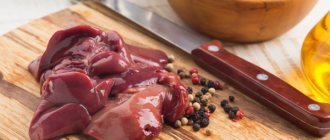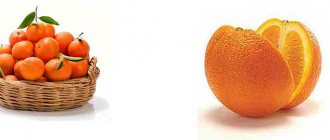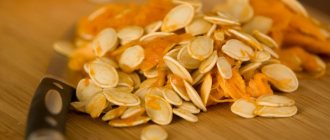Cod – the most valuable commercial fish sturgeon family, known for its dietary properties.
Its white meat contains many useful substances, while at the same time being quite low in calories (70 cal per 100 g).
However, the greatest value for humans is liver , from which canned food is produced.
The method of preparing it is very important here; the method of preparing it from fresh fish is rightfully considered the most useful. But today, frozen fish has become used quite often, which, unfortunately, significantly reduces the amount of useful substances in it.
It is not possible to completely control the method of preparation of this product; this can only be learned from additional information about the manufacturer: during the preparation of fish, it must be located on the water and the processing process must begin immediately after the catch. Therefore, when purchasing a product, it is recommended to pay more attention to already well-known, well-proven brands and manufacturers.
To prepare the product correctly , it must be prepared in its own fat without vegetable oil with the addition of black pepper, sugar, salt and bay leaf.
Note. When purchasing, pay attention to the presence of vegetable oil. If it is present, this may mean that the fish was most likely frozen before cooking, which means it has lost its beneficial properties due to the lack of fat.
Atlantic cod liver is a very popular product, which is used to prepare various salads, pates and other dishes. To make it, fish are bred and raised in special nurseries. In addition to cooking, this product is widely used in treatment, for example, for the production of the most valuable and healthy fish oil.
What other beneficial properties are contained in the product?
Historical information
Content:
- Historical information
- Characteristic
- Beneficial features
- Cod liver
- Chemical composition
- Cod roe
- Using fish in cooking
- Cod for pancreatitis
- How to cook cod?
- Note to housewives
- Conclusion
Cod has played an important role in the history of Europe and America for more than a thousand years. The Vikings who lived on the Lofoten Islands ate dried fish. Immediately after the catch, it was hung in an open, well-ventilated area; after three months, the carcasses were beaten until the meat became soft and edible. Such nutritious food was stored for a long time, which was ideal for a wandering tribe.
Fish then gained popularity in Europe for religious reasons: unlike meat, it could be eaten during Lent.
Between 1958 and 1976, a diplomatic conflict arose over cod. The controversy stemmed from the first state's imposition of a 200-mile economic zone around the island, which prohibited fishing in Icelandic waters where British fishermen were casting their nets.
Interestingly, the maximum weight of the largest cod caught in history was 96 kilograms.
Contraindications for use
There is still harm to the human body, even despite the enormous benefits. Those who have problems with:
- thyroid gland;
- kidneys;
- gastrointestinal tract;
- pressure;
- gallbladder.
For allergy sufferers, it is still better to consult an allergist.
Important! For an adult, the daily consumption rate is about 35-40 g due to the excessive fat content of the delicacy.
Characteristic
The fish's habitat covers the Atlantic Ocean (Baltic, White Sea, Arctic cod). In the east of the Atlantic it is distributed from Spitsbergen and the Barents Sea to the Bay of Biscay, in the west - from Greenland to Cape Hatteras. In particular, it lives in the Norwegian Sea, the Pacific Ocean, and off the coast of Iceland. Interestingly, only two types of fish are most often found under the trade name cod - Pacific and Atlantic. Baltic, White Sea, and Greenlandic ones are in less demand.
Cod can withstand low temperatures (from minus 1 degree Celsius and below). Her life expectancy reaches 25 years.
The young individual feeds on mollusks, small crustaceans. At the same time, by the age of three she becomes a real predator and begins to eat other fish: capelin, pollock, herring, and her own young. To catch cod, they use fixed and purse seines, snurrevods, bottom and pelagic trawls, and longlines.
This is a prolific fish that begins to lay offspring in March-April, making long 1,500-kilometer migrations to spawning grounds. Cod spawn in the water column; their numbers can reach up to 2 million in a few weeks.
In 1992, the Canadian government imposed a moratorium on fishing due to a sharp decline in the number of individuals and the threat of complete extinction of the species. This is the most important commercial fish, which is a raw material for the production of canned food and a source of valuable fish oil.
Large exporters of cod: Canada, Denmark, Great Britain, Norway, Russia, Iceland.
Contraindications, possible harm
The main contraindication for use is an allergy to fish. You should also not eat seafood if there is an excess of iodine in the body. However, even in the absence of these pathologies, the liver can have a harmful effect on the body if consumed in unlimited quantities.
Possible adverse reactions:
- Nausea, vomiting, heaviness in the stomach. The offal is fatty, so it requires a lot of digestive enzymes to process it. If the pancreas fails to cope, the delicacy begins to decompose and release toxins.
- Rash, itching on the skin. Most often they occur due to an overdose of vitamins and minerals.
- Impaired kidney function. When consuming a large amount of the product, the organs begin to function in an active mode and feel a strong load.
The safe daily intake for a healthy person is 30–40 grams. For older people, this dose should be reduced by 25–30%.
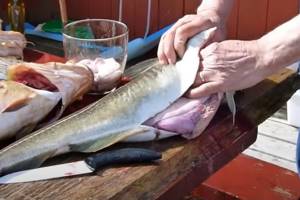
When consuming the product, you should also be aware of the possible mercury content. The toxic substance tends to accumulate in the liver. This organ is a filter for living beings. Toxic elements often settle in it.
Beneficial features

Cod fish meat is very dietary: 100 grams of product contains 82 kilocalories, and the range of nutrients is extensive and impressive (see paragraph “Chemical composition”).
Effect on the human body:
- Gives strength and accelerates the body's recovery after illness.
- Increases immunity.
- Strengthens teeth and bones.
- Reduces cholesterol levels, normalizes heart function.
- It has a beneficial effect on mental activity and improves oxygen supply to the brain.
- Strengthens the structure of the hair fiber and gives strength to the nail plate.
- Improves the condition of the skin and joints.
- Stabilizes mood, calms the nervous system.
According to research by British scientists, cod oil inhibits the activity of enzymes that cause the destruction of cartilage tissue and blocks the transmission of painful impulses to the brain.
Fish should be on the menu at least 3-4 times a week for people who suffer from:
- arthrosis;
- vitamin deficiency;
- disorders of the musculoskeletal system;
- diseases of the brain, heart;
- hypertension;
- osteoporosis;
- rickets;
- alopecia;
- frequent colds;
- depression, emotional breakdowns, nervous disorders.
Due to the abundance of vitamins B12, D, carotene and unsaturated omega-3 acids, women are recommended to eat cod throughout the entire period of pregnancy and breastfeeding. At the same time, doctors recommend gradually introducing meat, liver and fish roe into the diet of children from the age of three.
Contraindications for use:
- individual intolerance;
- hypotension;
- hyperthyroidism;
- cholelithiasis or urolithiasis.
You should not combine fish with dairy products, as this can lead to indigestion and disruption of the digestive tract.
a brief description of
Cod liver is an exotic product for many. It is not purchased as often as other canned foods, and there are several reasons for this:
- high price;
- fear of purchasing a fake;
- specific taste of the product.
However, it is necessary to introduce cod liver into the diet, because it is a storehouse of useful substances, which, it is worth noting, it contains more than the meat of the same fish.
What does it look like?
As a rule, the consumer sees cod liver already prepared, in a can. These are small pieces of offal of a pale pink color (sometimes pale brown if the liver was removed from old fish). The size of the slices may vary, as the fragile product breaks during processing.
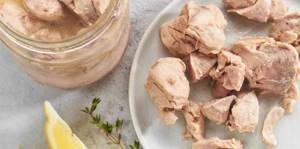
Dimensions and weight
It is difficult to say the exact size and weight of cod liver, since much depends on what the fish was like, or more precisely, on its size. The larger the fish, the larger the offal. But there are also average indicators, for example, in cod weighing over 2 kilograms, the weight of the liver is 4.6% of the total weight of the fish.
The size of the liver also depends on where the cod lived, in which seas and what it ate. It is worth noting that the size and weight of the offal are the same for both males and females.
Taste
The taste of cod liver scares many people, as it is quite specific. It is fatty, oily, soft in consistency and salty. The liver melts in your mouth, it is so tender. © https://ydoo.info/product/pechen-treski.html When purchasing, many people note that the liver floats in oil, but in most cases this is its own fat, of course, provided that the manufacturer did not intentionally add oily liquid to the product.
Smell
The liver aroma is fishy and pungent. Some note that it is not entirely appetizing. Sometimes special herbs are added to canned food to neutralize the odor of the product.
How and with what do they eat?
The by-product is sold in two forms:
- in pieces;
- in the form of a pate.
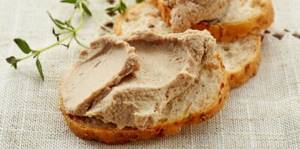
Cod liver pieces have a wider range of uses, for example, it is added to vegetable salads, served with herbs and added to soups. Offal pate is most often used to make sandwiches, rolls, toasts and canapés. But it is worth noting that the consistency of cod liver is so delicate that even pieces can be easily spread on bread.
The by-product goes well with:
- legumes (preferably with beans);
- eggs;
- tomatoes;
- any greens;
- carrots;
- cheeses (especially processed ones);
- green onions.
By combining the products listed above, you can make very tasty salads and snacks for the holiday table.
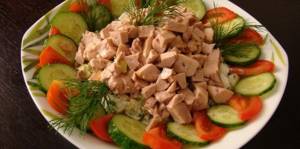
Cod liver
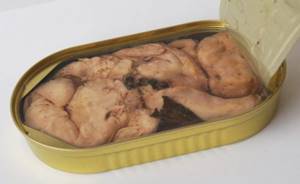
This is an expensive northern delicacy, which owes its popularity to its bright individual taste, unique properties, high nutritional value, and compatibility with numerous dishes. It can be eaten on its own or combined with stews, creamy soups, salads and sandwiches.
The main distinguishing feature of cod liver is the lack of heat treatment during canning. Interestingly, to make most canned fish, fish is boiled, marinated or smoked. This leads to partial or complete loss of vitamins, macro- and microelements. Cod liver is placed in jars exclusively in its raw form and filled with its own fat. Thanks to this, the active substances of the by-product and the piquant taste are preserved throughout the entire shelf life of the product.
The energy value of canned cod liver reaches 613 calories, the amount of B: F: U equals 3%: 96%: 1% per 100 grams of product.
What are the benefits of offal?
- Improves vision, sharpens the perception of light rays in the dark.
- Protects the body from carcinogenesis.
- Supports the coordinated functioning of the endocrine system and the normal condition of the joints.
- Normalizes metabolic processes in cartilage and bone tissues.
- Promotes the full functioning of the circulatory system, increases hemoglobin.
- Strengthens the walls of blood vessels, prevents the development of anemia, atherosclerosis, cancer, rickets.
- Improves skin condition, smoothes wrinkles
Who needs to eat cod liver?
This by-product is equally useful for children, adolescents, mature and elderly people. However, athletes and people suffering from:
- increased blood clotting;
- diseases of joints, bones;
- vitamin deficiency;
- inflammatory processes of internal organs;
- high content of “bad” cholesterol;
- heart problems.
Remember, 40 grams of canned cod liver per day covers the body’s daily need for healthy fatty acids, compensates for the lack of vitamins necessary to maintain normal functioning of the body, prevents the development of Alzheimer’s disease, arrhythmias and physical exhaustion.
The disadvantages of fish by-product include high calorie content, so overweight people should avoid eating it.
When buying canned food, pay attention to the inscription on the can. The “correct” product will have the “highest grade” label indicating GOST, confirming the preservation of cod liver according to technology regulated by the state. Pay attention to the composition of the product. Cod liver is preserved in its own juice and no other oil can be used in its preparation. The presence of “foreign” ingredients (flavors, dyes, stabilizers, flavor enhancers) in the composition indicates the introduction of harmful chemical additives into the product. Avoid purchasing such a product.
How to choose?
Unfortunately, cod liver is one of those food products that is often counterfeited. To ensure that the purchased canned food does not disappoint, you should know some norms and rules for choosing:
- Of course, the first thing the buyer sees is the packaging and the information on it. You need to find on the label an indication of where the cod was caught, since the best liver is obtained from fish caught in the Arkhangelsk and Murmansk regions. At the same time, it is very important that the production of canned food is carried out in the same region, since this is what will guarantee that the liver was removed from fresh and not frozen fish.
- Next, you should familiarize yourself with the composition. A quality product should not contain anything other than liver, salt and bay leaf (black peppercorns are also possible). The presence of vegetable oil in canned cod liver is undesirable. All fat that is in the jar must be released exclusively by the liver during sterilization.
- Numbers are stamped on the container (usually the top part). The presence of code “010” in the second row is an indication that the consumer is holding cod liver in his hands, and not something else.
- The date of manufacture must also be stamped on the lid of the container. If it was printed on the label, then you should not buy such a product, since the chance of getting a fake is too high.

After purchasing at home, you can evaluate the cod liver externally. The color of the product should be a uniform pale pink, without spots, as they may indicate that the liver is missing or damaged by parasites, which is very dangerous.
Do not confuse liver tracks from the Murmansk region and “cod liver in Murmansk style”. The latter is prepared in the form of a mousse, this does not greatly affect the taste, but the consistency is not so pleasant.
When studying the label, you should also consider the container itself. It should not be swollen or damaged. And if you shake the jar, there should be no gurgling sound. The presence of liquid indicates that the manufacturer could have added oil or water, which is unacceptable.
Chemical composition
Cod is an ideal fish for people who are watching their figure and counting calories.
It contains a minimum of fat with a maximum amount of nutrients (vitamins, minerals, phospholipids). White dense fish meat contains 19% protein and 0.4% beneficial triglycerides. Table No. 1 “Nutritional value of cod meat and liver”
| Name | Content per 100 grams of product, milligrams | |
| Meat (boiled) | Liver (canned) | |
| Calorie content | 69 calories | 613 calories |
| Water | 82.1 grams | 26.4 grams |
| Fats | 0.6 grams | 65.7 grams |
| Squirrels | 16 grams | 4.2 grams |
| Carbohydrates | 0 | 1.2 grams |
| Cholesterol | 0.04 grams | 0.25 grams |
| Ash | 1.3 grams | 2.3 grams |
| Saturated fatty acids | 0.1 gram | 10.6 grams |
| Organic acids | 0 | 0.2 grams |
| Mono- and disaccharides | 0 | 1.2 grams |
The energy value of cod depends on the method of cooking: salted - 98 kcal, stewed - 101 kcal, fried - 111 kcal, hot smoked - 115 kcal, grilled - 172 kcal.
Fresh fish can only be purchased at the places where it is caught, since its meat is not suitable for long-term transportation; in other cases, it is immediately frozen and salted. Table No. 2 “Chemical composition of cod meat and liver”
| Name | Content per 100 grams of product, milligrams | |
| Meat (boiled) | Liver (canned) | |
| Vitamins | ||
| Retinol (A) | 0,01 | 4,4 |
| Nicotinic acid (PP) | 2,3 | 1,8 |
| Thiamine (B1) | 0,09 | 0,05 |
| Riboflavin (B2) | 0,07 | 0,41 |
| Pyridoxine (B6) | 0,2 | 0,23 |
| Folic acid (B9) | 0,0013 | 0,11 |
| Cyanocobalamin (B12) | 0,0016 | 0 |
| Ascorbic acid (C) | 1 | 3,4 |
| Cholecalciferol (D) | 0 | 0,1 |
| Tocopherol (E) | 0,9 | 8,8 |
| Biotin (N) | 0,01 | 0 |
| Macronutrients | ||
| Potassium | 340 | 110 |
| Phosphorus | 210 | 230 |
| Sulfur | 200 | 42 |
| Chlorine | 165 | 165 |
| Sodium | 55 | 720 |
| Magnesium | 30 | 50 |
| Calcium | 25 | 35 |
| Microelements | ||
| Zinc | 1,02 | 0,7 |
| Fluorine | 0,7 | 0,43 |
| Iron | 0,5 | 1,9 |
| Copper | 0,15 | 0 |
| Iodine | 0,135 | 0 |
| Manganese | 0,08 | 0 |
| Chromium | 0,055 | 0,055 |
| Cobalt | 0,03 | 0 |
| Nickel | 0,009 | 0,006 |
| Molybdenum | 0,004 | 0,004 |
Remember, cod can accumulate arsenic and mercury, which cause poisoning in the body. Fish caught off the coast of Alaska is considered safe.
How to store?
Storing cod liver is a very important nuance that few people attach importance to. The thing is that finding fresh offal is problematic, since to do this you need to remove the liver immediately after catching the fish and cook it for several hours. Fresh product cannot be stored for more than a day. For most consumers, it is simply impossible to be here and now when cutting fish.
As for frozen liver, it can be sold, but only with fish. The shelf life of such a product is no more than 6 months. Anyone who buys such a product will be forced to first defrost the fish, and only then remove the liver from it. But the thawed offal no longer contains anything useful, so it is impossible to get at least some vitamins from it.
Therefore, the best and most common option is canned cod liver. Moreover, for proper preparation, you need to gut the fish immediately after catching, remove the liver and preserve it for 6 hours. Only such a product contains the maximum amount of nutrients, vitamins and minerals.
Conditions
It is optimal to store canned cod liver in the refrigerator. The temperature should be from 0 to +15 degrees (although GOST recommends a maximum temperature of +20 degrees).
Temperature changes are very dangerous for canned fish, so you should not leave them on tables at room temperature. You should keep the jars away from direct sunlight and away from the stove. If you do not follow these recommendations, the product may deteriorate faster than indicated on the packaging.
After the can is opened, you must immediately transfer the liver to another container (even a plastic container with an airtight lid will do). This must be done, because after opening the tin can comes into contact with oxygen and oxidizes, poisoning the contents.

Deadlines
Like most canned foods, cod liver has a long shelf life of 30 months. But provided that the jar is stored at the recommended temperature and is not exposed to temperature changes. As for an open can of cod liver, it is better not to neglect the rule and consume the product immediately or within a maximum of 12 hours after opening the package.
Can it be frozen?
When asked whether it is possible to freeze cod liver, the answer is clear - no. Too low a temperature will not only deprive the product of all nutrients, but also make the taste of the liver unpleasant. The consistency will also change: the product will disintegrate.
Is it possible to eat liver that is bitter?
Why can cod liver taste bitter? There are two options here. First: it was improperly prepared and preserved. Such a product can be dangerous, since it is possible that it may contain parasites, since the liver cannot be heat treated, but is immediately placed in containers that are hermetically sealed and only then sterilized. Bitterness will be a signal that some stage of cooking has been disrupted, and cod liver poisoning is possible. Second option: most likely, a frozen product was used to prepare the canned food.
Is it possible to eat liver that has a bitter aftertaste? It’s better not to, as there is a risk of poisoning or, even worse, becoming infected with parasites if the cooking process was disrupted. Eating bitter cod liver will be problematic, as its taste will be too specific.
Cod roe
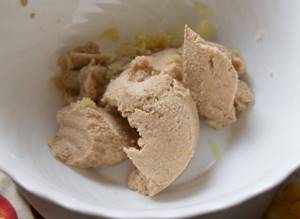
In terms of nutritional properties, cod caviar is not inferior to red and black. It is used for making sandwiches, salads, sauces, and snacks. Caviar is produced from mature cod eggs using vegetable oil and sodium benzoate. It goes on sale in ready-canned form.
Cod caviar is a valuable delicacy, a source of vitamins A, B, C, D, phosphorus, sodium, calcium, iodine, and potassium. In addition, the product contains omega-3 amino acids, which are essential for the human body. Interestingly, the degree of protein absorption in cod fish eggs is 2 times higher than in the livestock sector. It gives strength to people with low vitality (old people suffering from nervous disorders, stress), restores impaired metabolism, and supports the functioning of the thyroid gland.
It is believed that cod caviar has a beneficial effect on the body of a pregnant woman: it develops high intellectual abilities in the baby.
Despite its many benefits, it should not be eaten on a daily basis as it contains salt and can lead to the formation of kidney stones.
The nutritional value of cod caviar is 115 calories per 100 grams of product, the ratio B : F : Y is 42% : 55% : 2%.
Contraindications
You should not eat cod liver:
- for cholelithiasis and kidney stones;
- for diseases of the liver and stomach;
- people who are overweight;
- persons with low blood pressure;
- if there is excess vitamin D and calcium;
- with hyperthyroidism of the thyroid gland;
- children under 3 years old;
- for allergic reactions to fish and seafood.
The product, when unopened, has a shelf life of no more than two years. If the jar is open, transfer the contents to a glass or plastic container and place in the refrigerator. The opened product can be kept in the cold for no more than two days.
Using fish in cooking
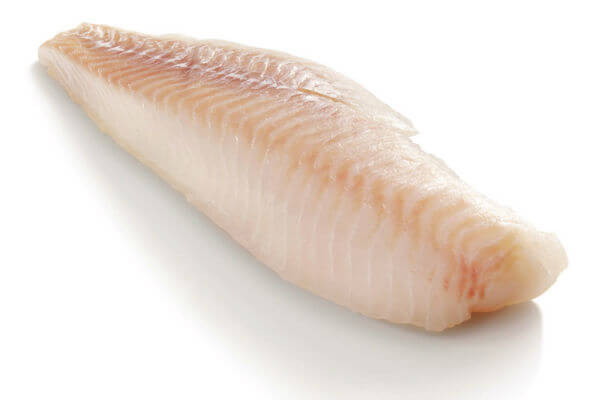
Cod meat is lean, tender in taste, and white in color. In salads, boiled or smoked fish fillet goes harmoniously with radishes, herbs, and apples. Cod is widely popular in cuisines around the world. It is used to prepare appetizers, puree soups, casseroles and pie fillings. They can also be grilled, dried, smoked, canned, fried, boiled and served as an independent dish.
To preserve vitamins, macro- and microelements, it is recommended to steam cod. When purchasing, pay attention to the condition of the carcass. Frozen fish will be watery and tasteless during cooking.
Sea fish has a characteristic strong smell, which intensifies during heat treatment, so you need to boil it in water with the addition of a large amount of spices, roots (onion, celery, parsley) or pre-sprinkle it with lemon juice.
Without loss of beneficial properties, chilled cod can be stored in the refrigerator for three days, and frozen cod can be stored in the freezer for up to six months. To prevent the fish from overcooking during cooking, boil it in water with cucumber brine at the rate of 1 liter of liquid per 80 milliliters of pickling.
Acceptable replacements for cod in dishes: hake, pollock, haddock.
In modern cooking, this type of fish is actively used in salads and casseroles. In India, it is marinated in vinegar with local spices, then fried over an open fire. In Russia, fish salad is prepared with the addition of radishes, herbs, green sour apples, seasoned with mayonnaise, in Scandinavia - with mustard, dill, onions, sour cream, in America - with peanut butter, cinnamon, white pepper, noodles, ginger, lettuce, soybean sauce, noodles. In Europe, cod is grilled in a honey mustard glaze.
Is it possible for children
Pediatricians recommend introducing it into children's diets from the age of 3 years. At an early age, the product can cause dysfunction of the gastrointestinal tract, since the baby’s body does not produce enough enzymes to digest fatty foods.
A child under 6 years old can eat 20 grams of liver once a week, from 6 to 10 years old - 30 grams, from 10 to 14 - 30 grams 2 times a week. From the age of 14, you can gradually increase the dosage to an adult dose.

Excursion to an ancient factory for the production of fish oil from cod liver (Norway)

Fish oil is good for children's health
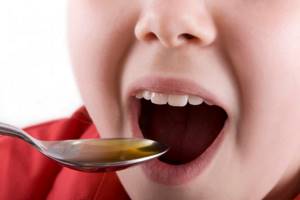
Advantages of fish by-product for children:
- preventing the development of rickets;
- memory improvement;
- acceleration of perception of new information;
- reducing the risk of fractures when falling;
- preventing the formation of blackheads and pimples.
The liver should be steamed, boiled or baked. It is better to give it to your child in the first half of the day, so that the product has time to be digested before bedtime.
Cod for pancreatitis
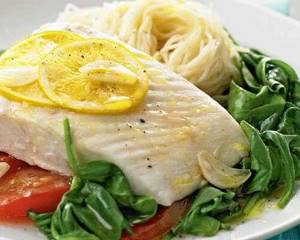
Cod fish meat is dietary and is recommended for consumption by patients with pancreatitis. Unlike pork, lamb, veal, and poultry, it lacks coarse fascia and tendons, it is tender and easily digestible. With minimal culinary effort, cod can be made into a dish with a puree-like consistency, which is especially important for a diet for pancreatitis, which involves grinding all food products in order to spare the digestive organs.
Fish is allowed to be consumed during the period of remission and exacerbation of the disease from the second week of the attack. It is boiled, steamed, served in the form of meatballs, cutlets, soufflés, quenelles, and meatballs. In addition to dishes prepared from minced cod, during the period of remission it is allowed to eat whole fish (baked, stewed, steamed). It makes nutritious casseroles and pies that will help diversify the patient’s diet.
Fish dumplings are recommended to be served with vegetable and cereal side dishes and vegetarian soups. In case of chronic pancreatitis, animal meat is replaced with cod, which is allowed to be consumed no more than 3 times a week. At the same time, the following fish dishes are prohibited: canned food, liver, aspic and broths that stimulate gastric and pancreatic secretion. In addition, avoid taking dried, smoked, or salted cod.
Remember, the healthiest fish is fresh. It should have a strong, elastic surface, be moderately shiny, and have a marine scent. The presence of yellowish stains on the carcass, damage, and a foul odor indicate long-term storage of the product on store shelves, which has been re-frozen. Avoid eating such fish.
The maximum daily portion of cod for a patient with pancreatitis is 200 grams.
Benefit for health
Cod liver is highly valued due to its rich chemical composition. Many people eat it canned in oil, and this is perhaps the best option. After all, if a high-quality product is purchased, then all the beneficial substances are preserved in it. But how exactly does the product affect the human body and health?
- The offal is a source of vitamin A. The liver contains so much of it that with regular use of the product, you will notice that vision improves, the skin becomes smooth, inflammatory processes go away, and nails and hair become stronger.
- The product also occupies a leading position in vitamin D content. As is known, it is necessary for both adults and children for normal bone tissue growth.
- B vitamins are also found in large quantities in cod liver. Just 100 grams of offal contains 20% of the daily requirement of vitamin B6. Its deficiency leads to anemia, breathing problems and cardiovascular diseases. Regular consumption of cod liver raises hemoglobin better than beets and beef liver.
- The liver also contains vitamin C, which helps strengthen the immune system.
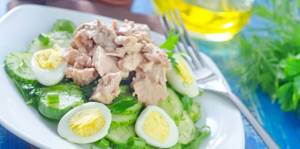
Cod liver oil deserves special attention. It contains unsaturated omega-3 fatty acids necessary for the body. Their deficiency leads to brain problems, causing lethargy and memory loss. The product is recommended for people with a predisposition to Alzheimer's disease. Eating cod liver completely replaces the use of fish oil and drugs based on it. As for liver oil, it also contains a certain amount of useful substances, but it is not always convenient to use it in food, so many people prefer to get rid of it.
The best time to enjoy cod liver is in the morning. It should be served for breakfast, then the human body will receive a charge of not only vitamins, but also energy.
Women
It is very important for women to maintain and control their diet, since the condition of their skin, hair, nails and hormonal levels depends on this. Undoubtedly, cod liver is a product that needs to be included in the menu, especially for pregnant women. The product helps:
- normalize hormonal levels, which are unstable in pregnant women;
- improve the condition of the skin, the appearance of which may worsen due to hormonal changes;
- reduce muscle pain, as well as the risk of cramps in the calf (this occurs due to the presence of magnesium in the liver);
- support the functioning of the cardiovascular system, the load on which doubles during pregnancy.

However, nursing mothers should introduce cod liver into their diet with caution. There are some contraindications under which the mother should not eat it:
- predisposition to allergies;
- mother's low blood pressure;
- Excessive calcium and vitamin D levels in the infant.
The last point is especially dangerous. Since the baby is breastfed, he receives all vitamins only through his mother’s milk, and its composition depends on what the nursing woman eats. If the child has an excess of vitamin D, and the mother still eats cod liver, this can cause the baby to have problems with appetite, headaches, increased fatigue and other negative consequences.
If there are no contraindications, then there is no need to rush to introduce cod liver into your diet. You need to wait 1-2 months after the baby is born and only then start eating cod liver, gradually increasing the amount.
Men
Men should also include cod liver in their diet. In addition to the general benefits for the body, the product has a positive effect on male potency. Doctors have proven that regular consumption of cod liver stimulates testosterone production and increases libido. It is especially useful for men who play sports to eat cod liver, as the product helps restore strength and gives energy.

Children
Despite the fact that cod liver is a healthy product, it can only be given to a child from a certain age. Doctors advise not to rush and wait until three years, since from this moment the child’s pancreas and stomach become stronger and more able to digest and absorb this product.
Cod liver cannot be given in its pure form; it should be combined with other products. For example, you can give it to your child for breakfast with a piece of bread or vegetables.
For the elderly
Older people get sick more often, and with age, most people experience memory deterioration. The reason for this is the death of brain cells. You can help cope with this with the help of not only medications, but also nutrition. One of the foods that stimulate brain activity is cod liver, and older people should eat it. The main positive properties of the product, such as strengthening the cardiovascular system and bone tissue, have the best effect on the health of people over 50.

How to cook cod?
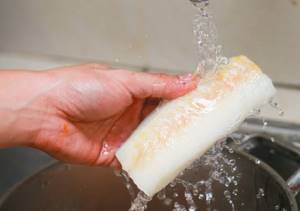
Before cooking, cut off the head, tail, and fins of the fish, gut it and wash it. If necessary, cut into pieces and rinse again under water. When purchasing frozen cod, be sure to defrost the carcass naturally before cooking in the refrigerator. When using a microwave oven or hot water, the fish will lose its taste and consistency.
You can cook the cod whole or in pieces (in portions). However, the finer the fish is cut, the less nutrients it will retain after heat treatment. Cod is cooked in a regular saucepan, double boiler, slow cooker, or pressure cooker.
Recommendations for preparing sea fish:
- You can put cod in both cold and hot water. In the first case, there is a guarantee that the tough fish meat will be cooked evenly.
- When placing cod in a regular pan, the water should completely cover its surface.
- Once defrosted, meat cannot be re-frozen.
- You can cook fish under a closed or open lid.
- To enhance the taste of cod, add cucumber pickle, tomato paste, citric acid, salt, carrots, onions, peppers or spices to the water.
- The fish is cooked exclusively in gutted form.
- Throughout the entire period of cooking cod, constantly control the heat: at first it should be high, when the water boils, reduce it to medium level, at the final stage reduce it so that it is weak.
- To preserve the structure of the fish, add 15 milliliters of vegetable oil to boiling water.
- If you do not have suitable kitchen equipment, you can cook the cod in a deep frying pan, adding water periodically. In this case, the process of preparing sea fish will be no different from the traditional method.
The duration of cooking cod depends on the size of the carcass (cut) and averages 15 minutes. Small pieces will be ready in 5 minutes. The fastest way to cook fish is in a pressure cooker. And the cooking time in a double boiler or multicooker will not differ in any way from heat treatment in a regular saucepan. The readiness of cod can be checked based on two factors: the ease of separating the fillet from the skin and bones, and the degree of meatiness of the meat.
Remember, regardless of the serving size, fish boiled for a baby is cooked for at least 20 minutes, then crushed until creamy and carefully checked for the presence of cartilage and bones.
Classic recipes
To cook delicious cod liver, you need to consider the following rules:
- Don't use a lot of oil. The product contains its own fat, which is released when heated.
- Fry only in breading. If the liver is not first rolled in breadcrumbs or flour, it will fall apart.
- Avoid canned offal, which is bitter. An unpleasant aftertaste appears in a spoiled product.
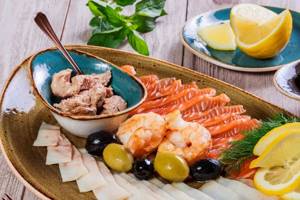
Examples of simple classic recipes:
Liver baked with vegetables
Components:
- 500 grams of fresh offal;
- 1 medium carrot;
- 1 sweet pepper;
- salt, spices to taste.
Preparation:
- Wash the liver, remove the films, add salt and pepper.
- We clean the vegetables and cut them into rings.
- Cover a baking sheet with foil, place carrots, sweet peppers, and liver on top.
- Wrap the workpiece and put it in the oven.
- Bake for 30 minutes at 180 degrees.
Canned food (according to reviews, the yield is 2 half liter jars)
Components:
- 1 kilogram of liver;
- 1 tablespoon salt;
- 6 peas of allspice;
- 4 bay leaves.
Preparation:
- Wash the offal, clean it, rub it with salt, put it in jars.
- Add spices and cover the containers loosely with lids.
- Pour water into a large saucepan and place containers with liver. The liquid level should be 2 cm below the height of the jar.
- Place the workpiece on the stove and bring the water to a boil.
- Sterilize the product for 60–90 minutes and roll it up.
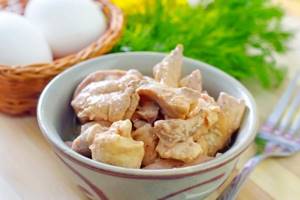
Liver pate
Components:
- 500 grams of offal;
- 2 teaspoons vinegar;
- 2 liters of water;
- 1 small canned cucumber;
- 1 boiled egg;
- salt and spices to taste.
Preparation:
- We wash the liver.
- Boil water in a saucepan, add vinegar, salt, spices.
- Boil the offal in the resulting composition according to the following scheme: wait until it boils, remove from the stove for 5 minutes, bring to a boil a second time, wait 2 minutes, turn off the heat, remove the liver, cool.
- Boil the egg and chop it.
- Grate the cucumber.
- Remove the liver from the water, soften it with a fork, and mix it with other ingredients.
The video shows other ways to prepare dishes from fish by-products.
What ingredients goes well with?
When preparing dishes with cod liver, you need to combine the ingredients correctly. In terms of taste, the product can be combined with many vegetables, sauces, spices and side dishes, but the combined use of some components can reduce the usefulness of the dishes.
If the combination is incorrect, the following processes can occur:
- slow digestion;
- the appearance of a feeling of heaviness in the stomach, flatulence;
- destruction of vitamins, deterioration in the absorption of minerals;
- activation of fermentation processes;
- liver dysfunction.
Compatibility table with other products
| Fine | Ghee, whey, greens, cabbage, carrots, beets, pickles, green vegetables |
| Acceptable | Rice, buckwheat, lemon, quinoa, tomatoes, butter, vegetable oil, pumpkin, eggplant, zucchini |
| Badly | Meat, poultry, eggs, mushrooms, cream, sour cream, lard, nuts, seeds, potatoes, dairy products, cheeses, feta cheese, wheat, rye, oats, bread, peas, chickpeas, mung beans, beans, beans, lentils. |
These phenomena occur due to incompatibility of products. For example, a combination of several fatty components creates a high load on the stomach and liver, the combination of food with a difference in the rate of digestion provokes putrefactive processes, alcohol additives stimulate the destruction of ascorbic acid.
Note to housewives
Classic recipe for cod with vegetables
Ingredients:
- cod – 1 carcass;
- carrots – 1 piece;
- lemon – 0.5 pieces;
- potatoes - 8 pieces;
- onion – 1 piece;
- rosemary – 2.5 grams (0.5 teaspoon)
- olive oil – 45 milliliters (3 tablespoons);
- black allspice, salt - to taste.
Cooking principle:
- Clean the carcass from scales, remove the entrails, cut off the head, and wash.
- Cut the back diagonally with a sharp knife.
- Grind pepper and salt in a mortar. Coat the cod with the mixture inside and out.
- Insert lemon slices into the slits.
- Cover a baking sheet with foil and place the fish on it.
- Peel potatoes, onions, carrots and cut into strips or rings.
- Drizzle the vegetables with olive oil, add salt and place on both sides of the cod, sprinkle with rosemary.
- Cover the top of the dish with foil, place in a preheated oven for 40 minutes, set the temperature to 180 degrees. Cook until potatoes are soft.
- When serving, decorate with herbs.
Cod casserole with rice
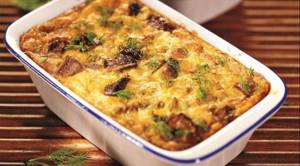
Ingredients:
- cod fillet – 400 grams;
- cream – 100 grams;
- rice – 250 grams;
- tomato sauce – 250 grams;
- hard cheese – 150 grams;
- egg - 2 pieces.
Cooking sequence:
- Cut the cod fillet into portions.
- Boil the rice until half cooked, grate 100 grams of cheese, and combine these ingredients.
- Place half of the resulting mass in a baking dish, then spread the fish over the surface, cover the cod with the remaining mass on top.
- Grate 50 grams of cheese on a coarse grater.
- Boil the eggs hard and chop. Combine with grated cheese and sprinkle on top.
- Mix cream and tomato sauce and pour over casserole. If desired, the dish can be sprinkled with breadcrumbs, and onions and cabbage can be added to the rice-cheese mixture.
- Preheat the oven, bake for 15 minutes at 180 degrees. Serve hot.
Dishes based on cod are tasty, light and satisfying. They can be eaten for dinner along with fresh vegetables and herbs.
Recommendations from nutritionists for losing weight
Despite its high fat content, cod liver is considered useful for weight loss. The product helps normalize metabolism, prevents the development of pathologies caused by obesity, and gives a feeling of fullness. Liver is often consumed by people on a keto diet and during fasting. It contains few carbohydrates, which in large quantities interfere with weight loss.
When getting rid of extra pounds, eat no more than 30 grams of cod liver 2 times a week or drink fish oil capsules. The product goes well with vegetables. To lose weight you need to give up canned, salted, smoked, fried types of fish dishes.
Useful elements
Microelements in cod liver (per 100 g):
- iron – 1.898 mg;
- nickel – 13.922 mcg;
- cobalt – 64.937 mcg;
- molybdenum – 14.007 mcg;
- manganese – 0.208 mg;
- copper – 12.493 mg.
Macroelements in the by-product:
- potassium – 111.017 mg;
- chlorine – 161.452 mg;
- calcium – 34.914 mg;
- phosphorus – 231.001 mg;
- magnesium – 49.143 mg;
- sulfur – 42.171 mg;
- sodium – 719.518 mg.
Consumption of cod liver during pregnancy and breastfeeding
Before and after childbirth, cod liver can be consumed. It will help strengthen the immune system and is an effective remedy against the development of thrombosis. Prevents the development of anemia and stimulates the proper development of the baby's skeleton in the womb. These same properties are useful for the mother herself. It's no secret that problems with bone mass often arise during pregnancy.
During lactation, cod liver will saturate breast milk with Omega-3 acid, which is very beneficial for the baby's body.

